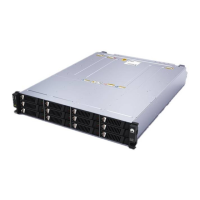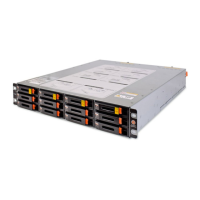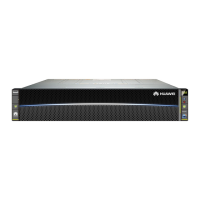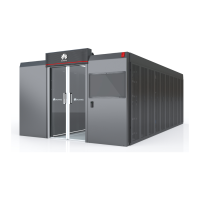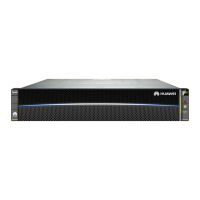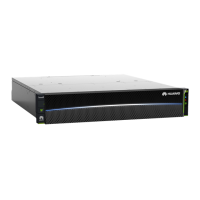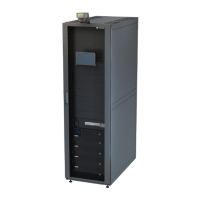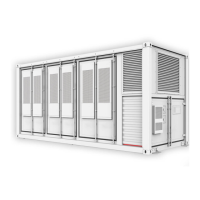
Do you have a question about the Huawei LUNA2000-2.0MWH Series and is the answer not in the manual?
Outlines the document's scope, covering installation, connections, commissioning, and troubleshooting of ESS.
Specifies that the document is for plant operating personnel and qualified electricians.
Defines symbols used in the document for hazards and notes.
Provides general safety instructions and precautions for installation, operation, and maintenance.
Details qualifications and training required for personnel operating the equipment.
Covers safety precautions related to cabling, grounding, and AC/DC power connections.
Specifies conditions for storing and installing the ESS to ensure safety and performance.
Outlines safety measures for handling and transporting the ESS, classifying it as dangerous goods.
Details safety procedures for hoisting, using jacks, and ladders during installation.
Explains the product models and their naming conventions, including capacity and backup power.
Identifies and explains various labels found on the equipment, such as warnings and symbols.
Describes the ESS's core functions and its integrated modular system features.
Illustrates the physical appearance and component layout of the ESS models.
Details the main components and their configurations within the ESS.
Describes the sub-systems related to power supply, including battery packs and controllers.
Specifies criteria for choosing a safe and suitable installation site, including distances and environmental factors.
Defines clearance requirements for installation, operation, maintenance, and safety aisles around the ESS.
Outlines the specifications for building a concrete platform and trenches for ESS installation.
Lists necessary tools, PPE, and checks required before starting the installation process.
Provides step-by-step instructions for positioning, hoisting, and securing the ESS unit.
Details procedures for installing internal components like copper bars and fire cylinder.
Specifies requirements for selecting and preparing various types of cables for ESS installation.
Guides on connecting socket circuit wires for different scenarios and models.
Instructions on how to prepare and connect DC power cables, including routing and securing.
Details the process of connecting AC input power cables from an external grid source.
Instructions for connecting single-phase AC input power cables, typically using a UPS.
Covers the installation of FE communications cables and optical cables for system connectivity.
Details the process of installing optical cables and connecting fiber optics.
Explains the procedure for sealing cable holes after installation to prevent environmental ingress.
Lists checks for equipment appearance, cable connections, layout, and switches before powering on.
Checks related to ESS installation, grounding, and general conditions.
Specific checks for the battery cabin, including circuit breakers, copper bars, and foreign objects.
Checks for the control unit cabin, covering SPD, AC meter, cables, foreign objects, and fire cylinder.
Describes the procedure for installing the Power Supply Unit (PSU) into its slot.
Details the steps for installing the solenoid valve onto the fire cylinder.
Provides a flowchart and sequence for powering on the system components.
Instructions for powering on the Smart Transformer Station and its auxiliary components.
Steps for powering on the Smart Array Controller, including pre-checks and switch operations.
Guides on safely powering on the distribution transformer and its auxiliary systems.
Final steps for powering on the Energy Storage System (ESS) itself.
Steps for preparing the PC and logging into the SmartLogger WebUI.
Guides on using the deployment wizard for initial system setup and configuration.
Instructions on how to check and interpret system alarms within the SmartLogger WebUI.
Procedure to initiate a system shutdown via the SmartLogger WebUI.
Outlines the sequence for powering off various system components.
Detailed steps for safely powering off the Smart Power Conversion System (PCS).
Instructions for powering off the battery side of the DC Low Voltage Panel.
Steps to power off the main Energy Storage System (ESS) by switching off circuit breakers.
Safety procedures for powering off the distribution transformer.
Lists common alarms from the CMU with severity, causes, and troubleshooting steps.
Provides guidance on leveling the ESS when its doors are obstructed.
Steps to check and reset the solenoid valve to ensure it's not activated.
Instructions for connecting the ESS to the Smart PV Management System via its WebUI.
Steps for creating a new plant within the PV management system.
Troubleshooting steps for a PSU that fails to start after alarms are cleared.
Presents detailed technical specifications for various ESS models and components.
Overview of CMU WebUI structure, including menus, layout, and icons.
Explains the meaning and function of various icons used within the CMU WebUI.
Details the navigation structure and functions available through the CMU WebUI menus.
Covers procedures for software upgrades, log export, and system maintenance via the CMU WebUI.
Steps for setting up the PC and logging into the CMU WebUI for operations.
Guide on obtaining and installing the SUN2000 mobile application.
Instructions for logging into the SUN2000 app, including prerequisites and login procedures.
Procedures for changing WLAN hotspot and user login passwords within the app.
Specifies requirements for using copper, aluminum, and mixed wiring terminals for crimping.
Detailed steps and precautions for crimping OT and DT terminals onto cables.
Conditions to meet before repainting, including weather and paint preparation.
Describes how to repair minor and major paint damage, including procedures and materials.





